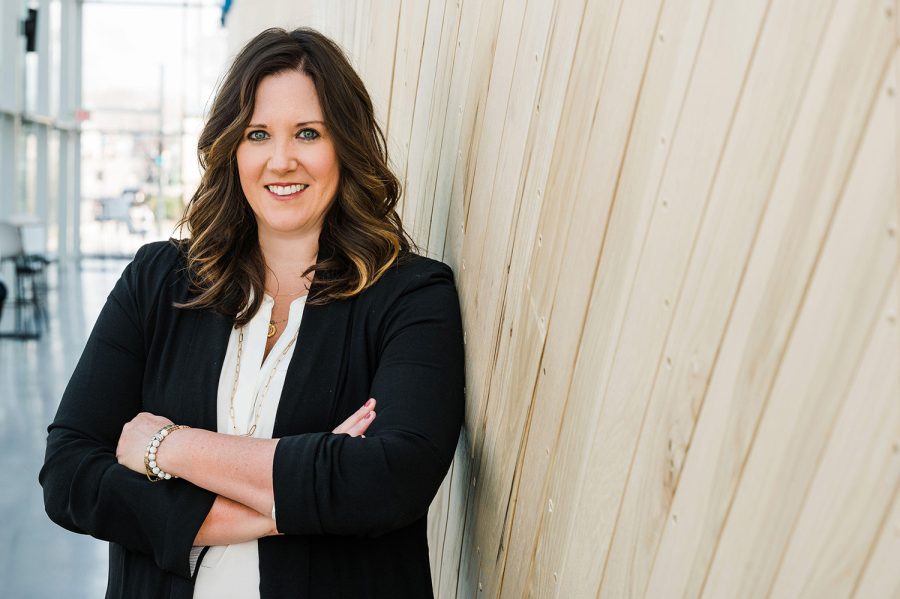Johnson County’s Project Better Together aims to bring the community together
Addressing community disparities and bringing the community together are goals the Johnson County Project Better Together hopes to address by 2030.
Contributed photo of Kate Moreland.
March 22, 2022
The Johnson County Project Better Together 2030 is prioritizing resident input in its current community visioning initiative phase.
The goal of the project is to consider how demographic, economic, political, and environmental factors affect the lives of Johnson County residents.
Project Better Together 2030 is made up of local groups in the Iowa City area including the Iowa City Area Partnership, the Iowa City Area Development Group, Think Iowa City and the Iowa City Downtown District.
In the Iowa City area specifically, the Iowa City City Council is in the process of creating plans to address community needs like affordable housing, racial equity and climate action, for the next five years with the help of its Strategic Plan and Capital Improvement Plan.
Alongside the four Iowa City groups, local leaders like the University of Iowa President Barbara Wilson, and Iowa City Mayor Bruce Teague are also a part of the Project Better Together 2030 steering committee which will aid the four groups in implementing actions.
The plan was developed after the first year of the COVID-19 pandemic in efforts to achieve success in addressing community needs throughout the overall region of Johnson County, Josh Schamberger, president of Think Iowa City, said.
“We started pivoting and responding to many of the other community needs that were being identified through that sort of discussion,” Schamberger said.
Schamberger said one key component of the project is understanding every group involved in the project and individuals of the community have a different vision for the Johnson County community.
The four Iowa City groups met with a consultant after the start of the COVID-19 pandemic to better understand and come up with an expedited response to the pandemic, Schamberger said.
Kate Moreland, president of the Iowa City Area Development, said the COVID-19 pandemic created an opportunity for the community to work together.
“My perspective is I hope that it creates a new way of behaving and working together to solve big problems,” Moreland said. “I think there’s a huge opportunity here. Sometimes a crisis brings you together.”
Project Better Together is gathering public input by using a game entitled The Brainstorming Game, which was designed as a survey and was open to Johnson County residents until March 12.
The Brainstorming Game collected more than 1,000 responses, Moreland said. The results of the survey will help the project in developing its next steps to accomplish its goals.
“We don’t know exactly yet what it’s gonna look like, we’re just now closing public feedback, but we’ve gotten over 15,000 participants in the process, and so we feel good about that,” Moreland said.
The groups are gauging community needs by taking in consideration the differences in backgrounds, socio-economic status, and ethnicity Schamberger said.
“At the end of the day, the hope would be that our organizations which largely lead community and economic development efforts.” Schamberger said. “It would provide us some insight into what the community is seeing as priorities.”
Despite the public engagement and feedback the project has gotten, Schamberger said.
one problem that the project has been facing is letting the vast majority of Johnson County and Iowa City be aware of the project.
“It’s harder and harder these days to get the word out. And to try to find avenues to where the community is, is not only understanding it, but participating in it and so we’ve gone and spent a lot more time than you normally would in a process like this, but we’ve done it from the standpoint of trying to be overly inclusive and transparent,” Schamberger said.
In the long run, Schamberger hopes the Project Better Together can bring the Johnson County community together.
“The community can be shaped so that everybody has the quality of life that they aspire to have,” Schamberger said. “And that can only be done if we’re a little bit more united and unified in terms of what we’re prioritizing as a community and spending our time working on.”



